Making simple geometry resonate in complex ways is a hallmark of Tadao Ando’s work. Whether it’s embedding platonic volumes in the earth, as he did at the Chichu Museum on Naoshima Island (PDF–page 116), or inserting a cross of glass into a thick concrete box, as he did at the Church of the Light in Osaka (1989), the 79-year-old architect knows how to give emotional depth to buildings assembled from basic forms and honest materials. He’s done it again at the He Art Museum (HEM) in Foshan, a city in the Pearl River Delta about 20 miles southwest of Guangzhou and 110 miles north of Hong Kong. As he has before, Ando integrates architecture with landscape and water to create a project that’s both universal in its appeal and specific to its place.
Commissioned by He Jianfeng, a 53-year-old tycoon who has assembled an art collection ranging from traditional works to international and Chinese contemporary pieces, Ando rooted his design in beliefs from the area’s Nanyue culture, which flourished 2,000 years ago in a territory that stretched from Vietnam through today’s Guangdong, Guangxi, and Hainan provinces. According to Ando, the circle symbolized harmony in the Nanyue kingdom, and the Chinese character He represents peace and harmony, an opportune convergence. The site, though, presented challenges, as it sits south of a busy commercial district, where the client’s family has the headquarters of one of its businesses, and north of a public park—two areas with very different features.
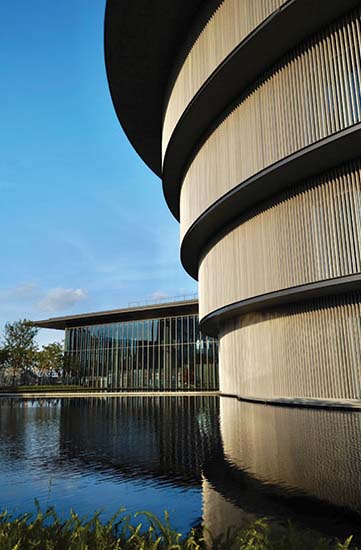
Ando balanced the dominant circular geometry with an attached glass box for exhibiting modern art. Photo © HEM, click to enlarge.
“I fully embraced the idea of harmony as an architectural concept,” says Ando. To do so, he reached out to the surrounding areas with pathways radiating from a circular main building, while balancing hardscape with water and planted zones. A series of freestanding concrete walls slicing through the landscape to the north and west buffer the museum from nearby office buildings and read as hardened ripples emanating from a powerful force at the center of the site. The walls choreograph an entry sequence that eases visitors from the busy commercial area to a refuge of culture and art. Inspired by Chinese garden design, this progression offers glimpses and oblique views of the museum as visitors arrive. “I wanted to create a dynamic contrast between the natural and the man-made to provide unique surprises,” says Ando.
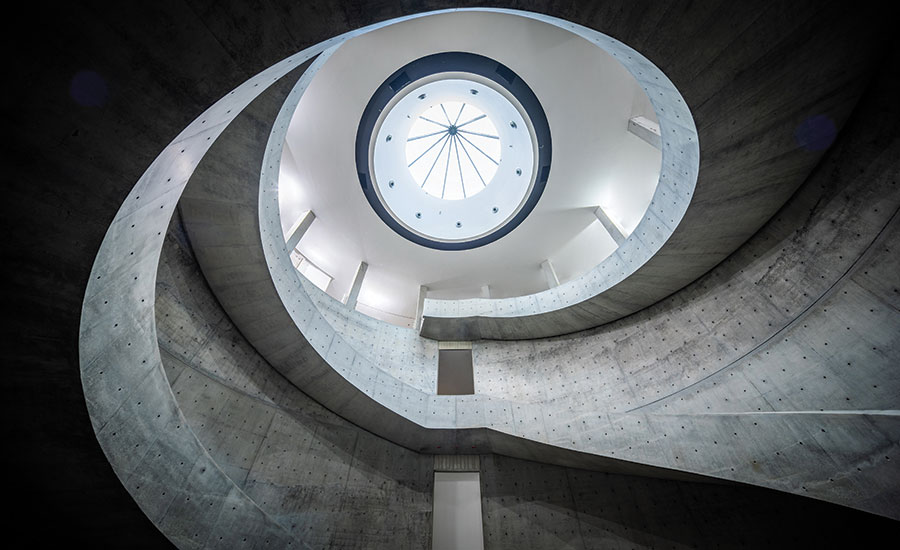
1
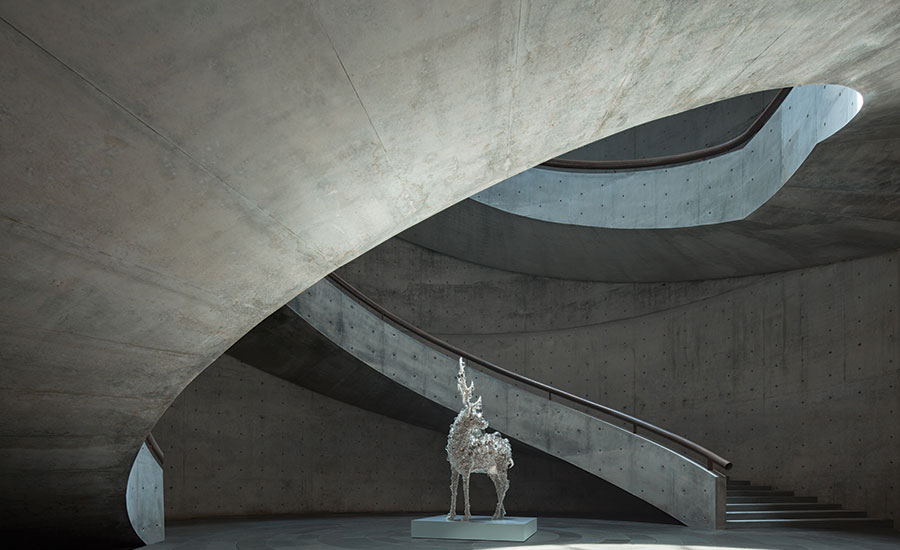
2
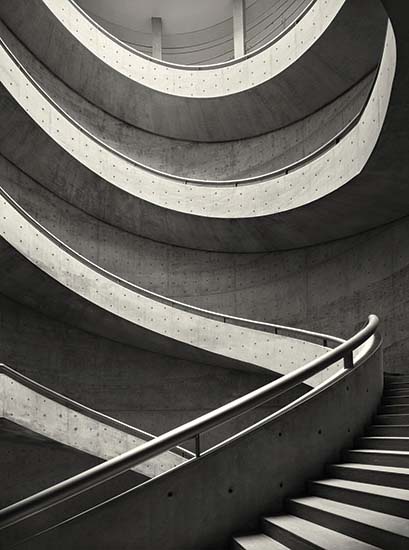
3
A poured-concrete double-helix stair in the central atrium imprints the building with its architectural DNA (1). A mixed-media sculpture by Kohei Nawa helps anchor the space (2). The double-helix stair (3) offers more sculptural interest. Photos © HEM
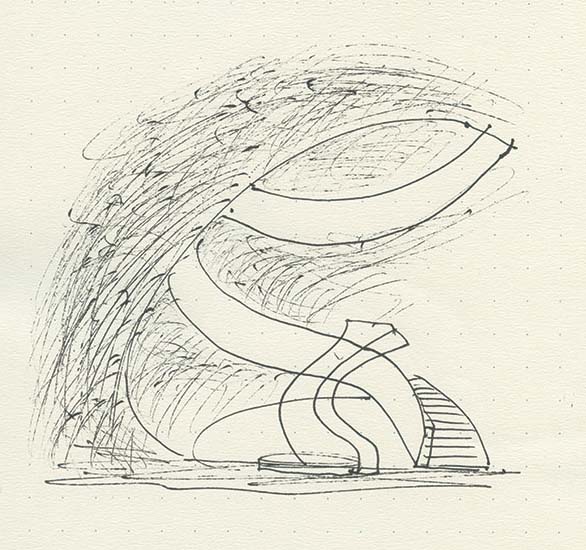
For the 176,000-square-foot museum, Ando stacked a set of shallow cylinders, each one expanding a bit farther in plan as the building rises. So the diameter of each gallery floor grows—from 42 meters (138 feet) at ground level to 45 meters (148 feet), then 48 meters (157 feet), and finally 51 meters (167 feet). A smaller fifth floor on top serves as mechanical and maintenance space. While a skylit atrium rising through the center of the building serves as a spatial anchor, the gallery floors slip past one another eccentrically, a few meters at a time. By doing this, Ando injects a subtle dynamism to the composition, which he accentuates with a dramatic double-helix stair spiraling through the atrium. The stair is a poured-in-place concrete element cantilevered from the surrounding walls; it serves as the structural core of the concrete-frame building. “The central void is the soul of this architecture,” explains Ando. Building the double-spiral stair with exposed architectural concrete was difficult because of the complex geometry, says the architect, but a challenge that was met by the contractor. “It is a testament to the great leap forward in the level of construction technology in China today.”
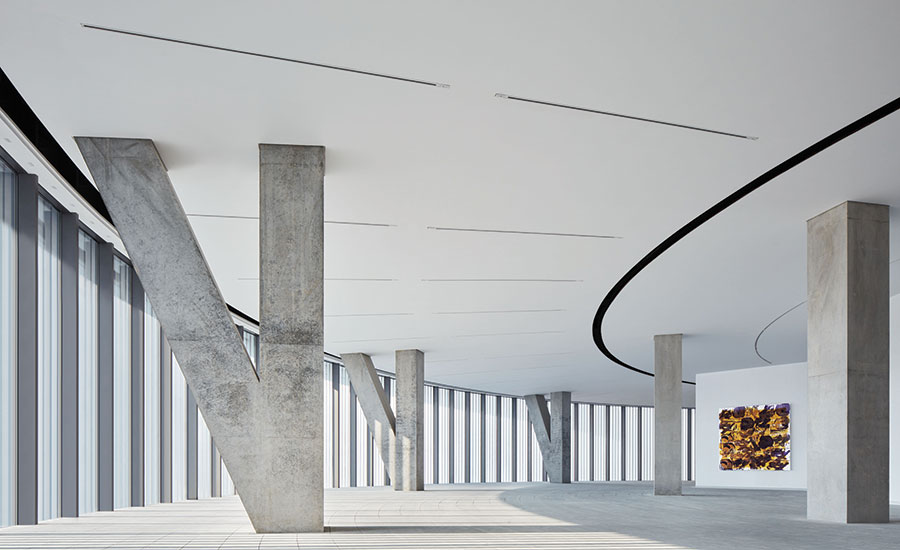
A typical gallery floor offers a ceiling height of 12½ feet and flexible space for displaying art . Photo © HEM
Large V-shaped concrete columns run near the perimeter of the gallery floors, allowing a great degree of flexibility for mounting exhibitions in the 12½-foot-high spaces. Instead of using the building’s architecture to define exhibition areas, Ando created a mostly blank slate on which temporary partitions and installations can be drawn. But the museum’s curving envelope shapes visitors’ lines of sight through the interiors, creating a flow of spaces that conceals some views as it reveals others. A large box with 29-foot-high ceilings attached to the northeast section of the main building accommodates exhibitions of modern art and helps balance the dominant circular character of the museum with a rectilinear counterpart.
In addition to giving the museum its distinctive form, the projecting cylinders of the main building shade the ones below, the deep eaves reducing solar loads. Narrowly spaced fixed vertical louvers around the building’s perimeter glazing also contribute to this effort, while reflecting pools at ground level help cool the subtropical air.
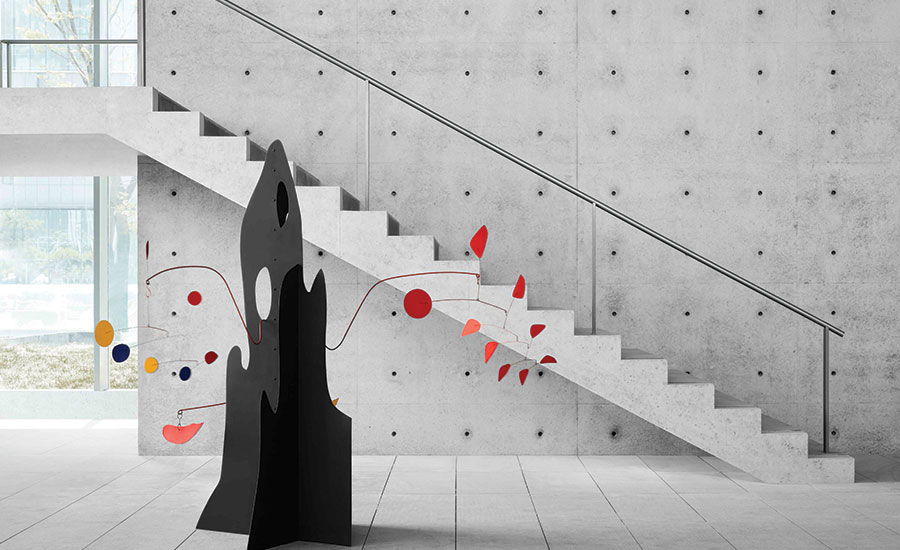
The special-exhibition hall, which has 29-foot ceilings, can display modern art such as an Alexander Calder piece. Photo © HEM
Originally scheduled to debut in March, HEM was delayed by the Covid-19 pandemic and finally opened on October 1. Its inaugural exhibition, From the Mundane World, occupies the second and third floors of the main building and examines man’s impact on nature. In addition to traditional Nanyue pieces, the museum’s collection includes works in ink on paper by artists from the Lingnan School, which revolutionized traditional Chinese art in the late 19th century, as well as pieces by modern and contemporary artists such as Zao Wou-ki, Zhang Daqian, Pablo Picasso, Damien Hirst, Yayoi Kusama, Anish Kapoor, and Roxy Paine.
HEM represents the strides China has taken in recent decades, helping to transform what had been an industrial part of Foshan into one with sleek office buildings and, now, cultural institutions. Ando’s design connects the area to its ancient Nanyue past, while delivering a modern destination for the country’s increasingly affluent and sophisticated population. Balancing old and new, circle and square, land and building, Ando creates a place of dynamic tension.

Photo © HEM
Click plans to enlarge
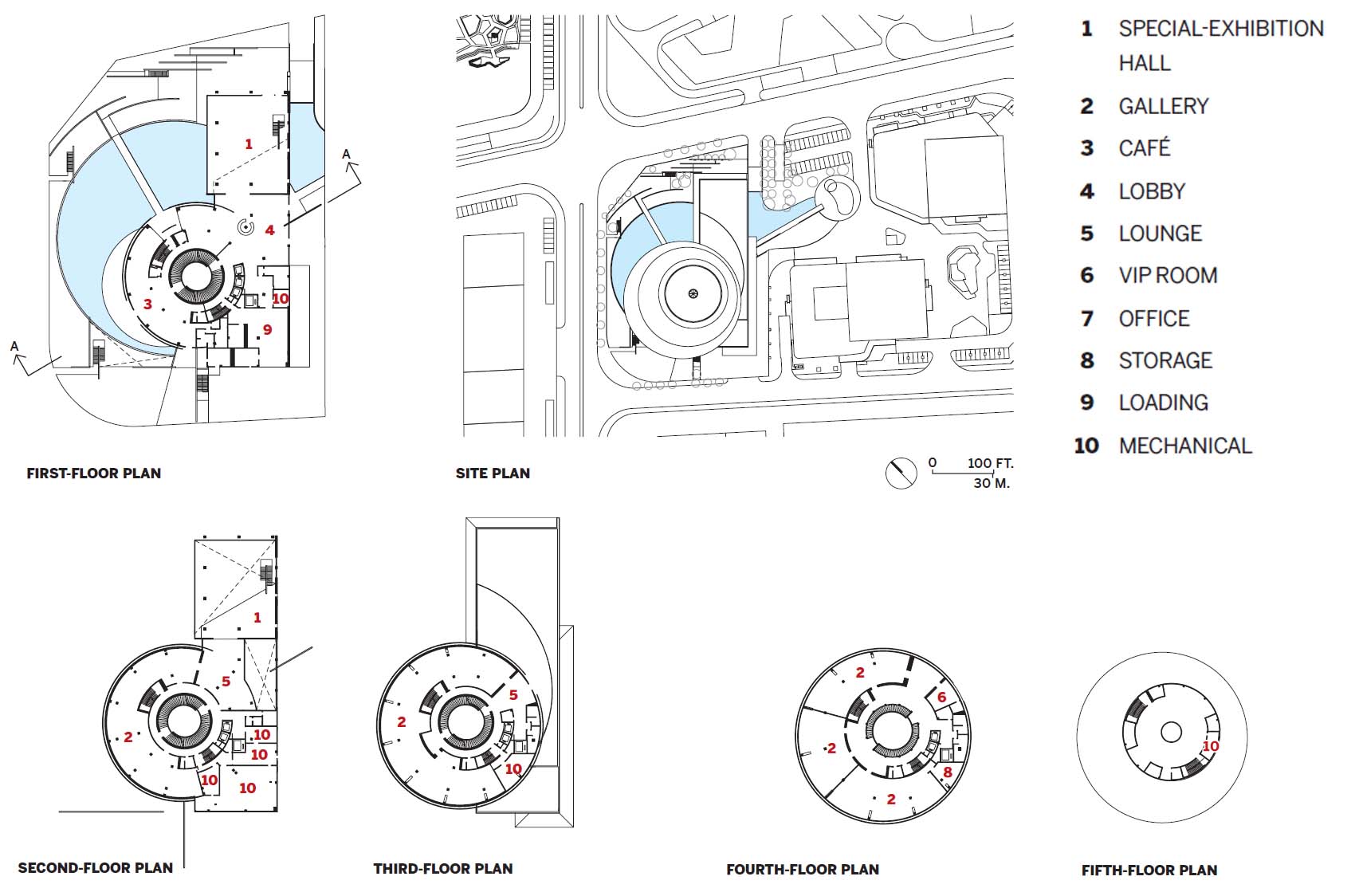
Click section to enlarge
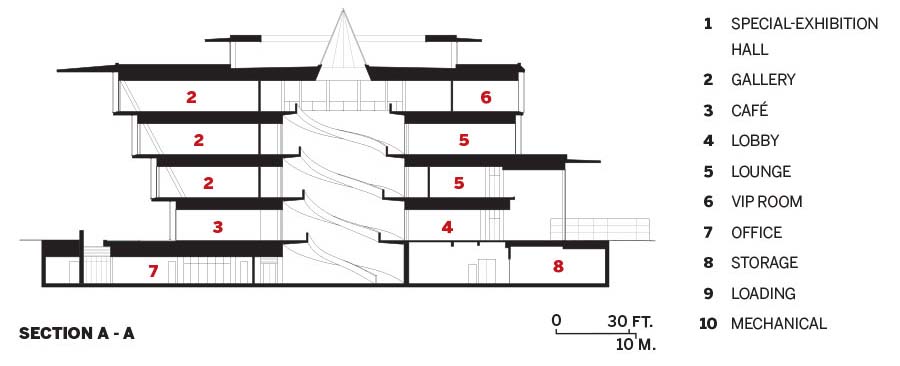
Credits
Architect:
Tadao Ando Architect & Associates — Tadao Ando, Masataka Yano, Kazutoshi Miyamura
Architect of Record:
Midea Real Estate Holding
General Contractor:
China State Construction
Client:
He Art Museum
Size:
176,000 square feet
Cost:
Withheld
Completion Date:
July 2020
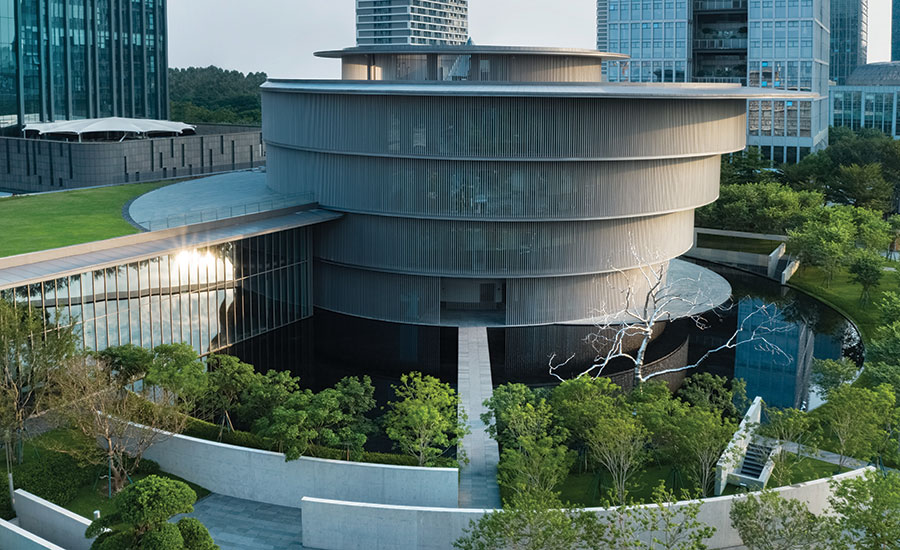



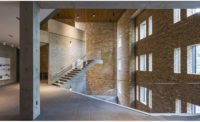
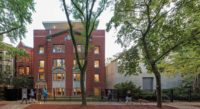
Post a comment to this article
Report Abusive Comment